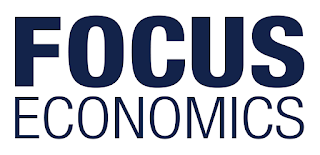China’s spectacular economic growth of recent decades will slow.
Amid rising trade tensions with the United States, economic growth decelerated in the third quarter to levels not seen since the trough of the global financial crisis in 2009. This has piled pressure on the Chinese government to reignite economic activity. On the upside, growth in fixed asset investment ticked up in September, suggesting that the first bunch of stimulus measures have started to kick in. Moreover, the economy is benefiting from the front-loading of shipments ahead of planned additional tariffs to be imposed by the U.S. in January 2019, as well as by less restrictive anti-pollution policies. Meanwhile, on 20 October the government presented a new special deduction plan to be implemented in 2019, which builds upon the tax reform announced in August and hopes to support household consumption. More recently, President Xi Jinping vowed to support private companies in a meeting with top businesses on 1 November. State-owned firms enjoy preferential access to credit, which hurts private financing especially in a context of weak lending growth. Looking ahead, China’s spectacular economic growth of recent decades will slow as authorities attempt to guide the country towards a more sustainable economic model. Moreover, headwinds from the tit-for-tat trade war with the U.S. and a potential sharp correction in the housing market are the main downside risks to growth. Despite this, a looser fiscal stance and a more accommodative monetary policy should cushion any sizeable economic downturn. FocusEconomics panelists see the economy growing 6.3% in 2019, which is unchanged from last month’s forecast, before decelerating slightly to 6.0% in 2020.
Inflation stabilized at September’s 2.5% in October. Despite high energy prices, a weaker currency and relatively loose monetary policy, inflationary pressures will remain largely contained, reflecting weakening domestic demand. FocusEconomics panelists forecast that inflation will average 2.3% in both 2019 and 2020. The People’s Bank of China (PBOC) uses a complex system to implement monetary policy, including the use of key benchmark rates, open market operations (OMO) and reserve requirement ratios. In recent weeks, the PBOC continues to inject liquidity into the system through OMO. Panelists expect that the one-year deposit and lending rates to close 2019 at 1.52% and 4.33% respectively, and 2020 at 1.57% and 4.33%. The yuan continued to tumble in recent weeks and hit the weakest point in a decade on 31 October. The depreciation reflected spillovers from the ongoing trade spat with the United States and cooling domestic growth. Nevertheless, the yuan strengthened slightly in the following days and, on 9 November, it traded at 6.96 CNY per USD, a 0.5% weaker compared to the same day in October. Our panelists see the yuan ending 2019 at 6.95 CNY per USD and 2020 at 6.81 CNY per USD.
The weakest performance since the financial crisis in the third quarter spells sharper Chinese slowdown
The Chinese economy decelerated further in the third quarter as the effects of aggressive financial deleveraging bogged down growth. GDP expanded 6.5% in annual terms in Q3, down from the 6.7% expansion recorded in Q2. The figure was below market analysts’ expectations of 6.6% growth and the softest print since Q1 2009. In seasonally-adjusted quarter-on-quarter terms, GDP growth inched down to 1.6% from a downwardly-revised 1.7% expansion in Q2.



